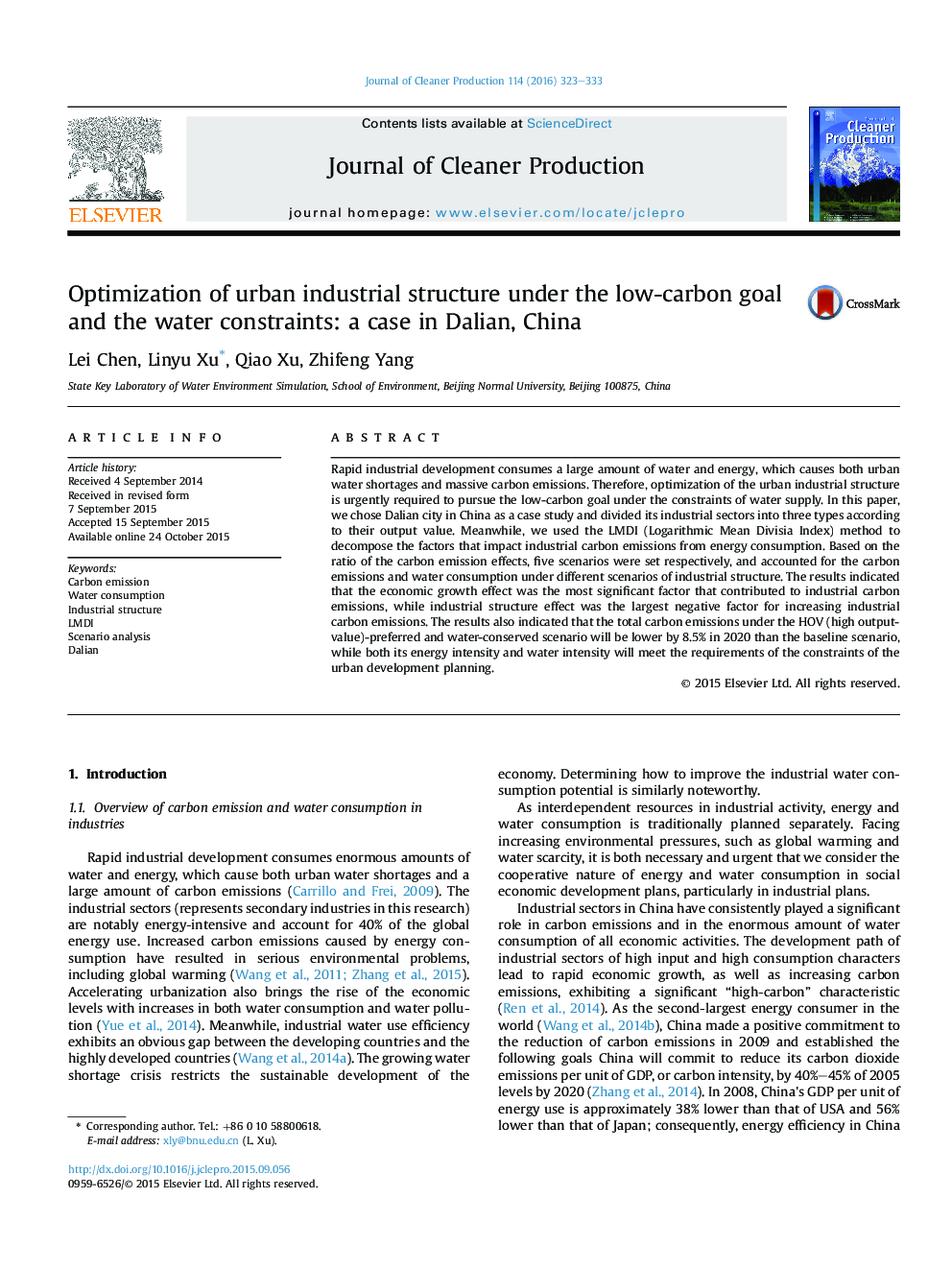| Article ID | Journal | Published Year | Pages | File Type |
|---|---|---|---|---|
| 8102751 | Journal of Cleaner Production | 2016 | 11 Pages |
Abstract
Rapid industrial development consumes a large amount of water and energy, which causes both urban water shortages and massive carbon emissions. Therefore, optimization of the urban industrial structure is urgently required to pursue the low-carbon goal under the constraints of water supply. In this paper, we chose Dalian city in China as a case study and divided its industrial sectors into three types according to their output value. Meanwhile, we used the LMDI (Logarithmic Mean Divisia Index) method to decompose the factors that impact industrial carbon emissions from energy consumption. Based on the ratio of the carbon emission effects, five scenarios were set respectively, and accounted for the carbon emissions and water consumption under different scenarios of industrial structure. The results indicated that the economic growth effect was the most significant factor that contributed to industrial carbon emissions, while industrial structure effect was the largest negative factor for increasing industrial carbon emissions. The results also indicated that the total carbon emissions under the HOV (high output-value)-preferred and water-conserved scenario will be lower by 8.5% in 2020 than the baseline scenario, while both its energy intensity and water intensity will meet the requirements of the constraints of the urban development planning.
Related Topics
Physical Sciences and Engineering
Energy
Renewable Energy, Sustainability and the Environment
Authors
Lei Chen, Linyu Xu, Qiao Xu, Zhifeng Yang,
